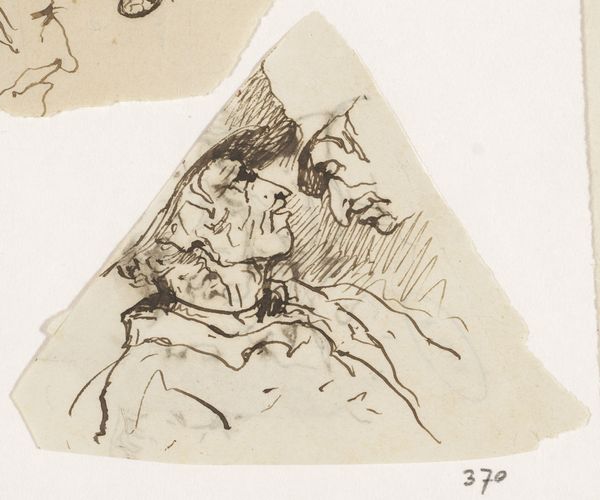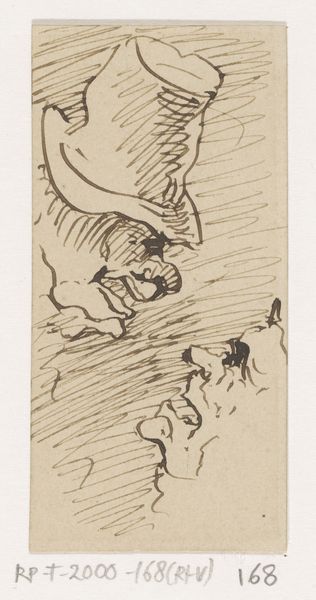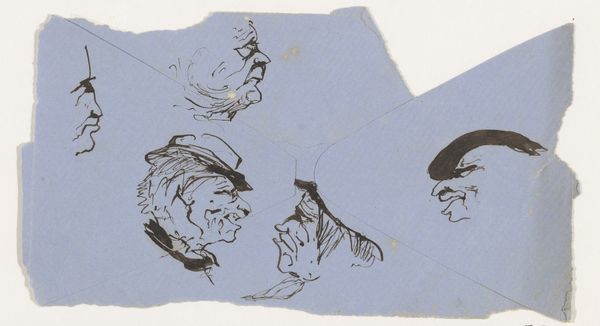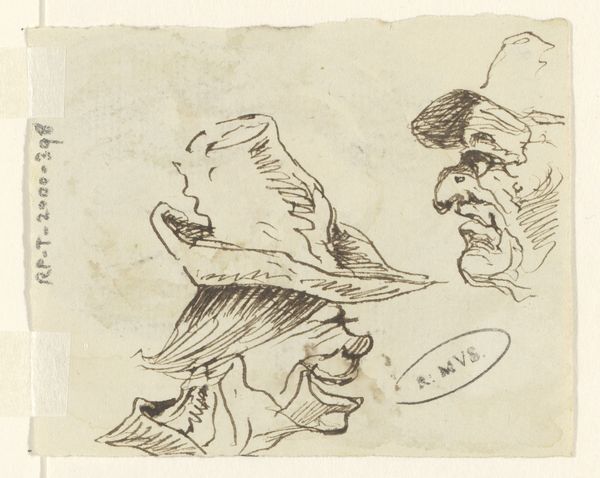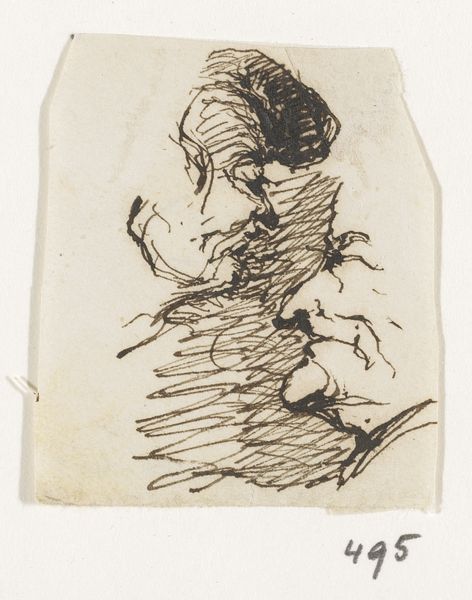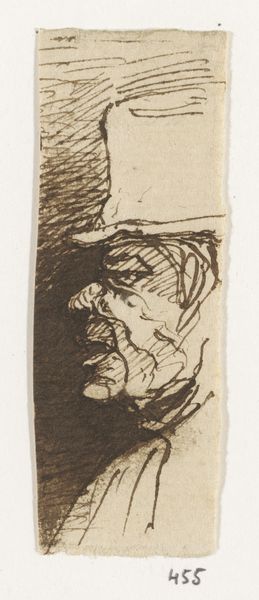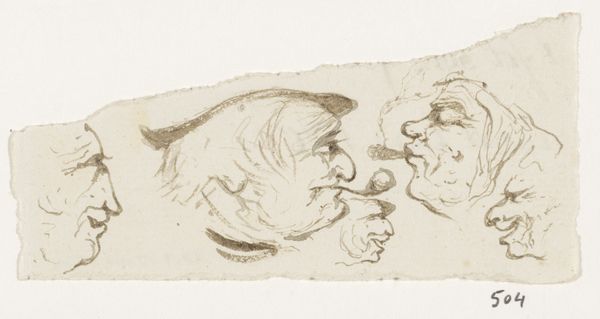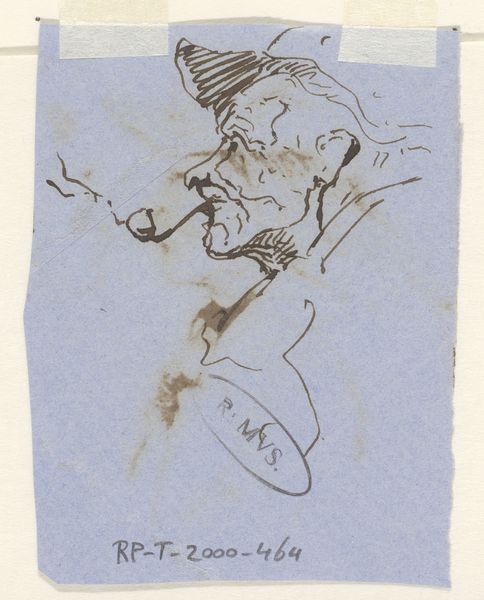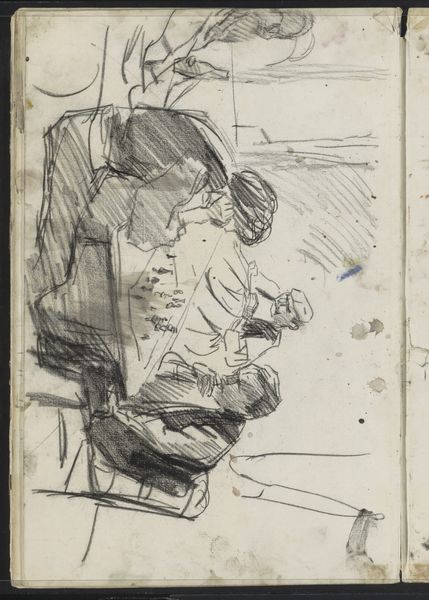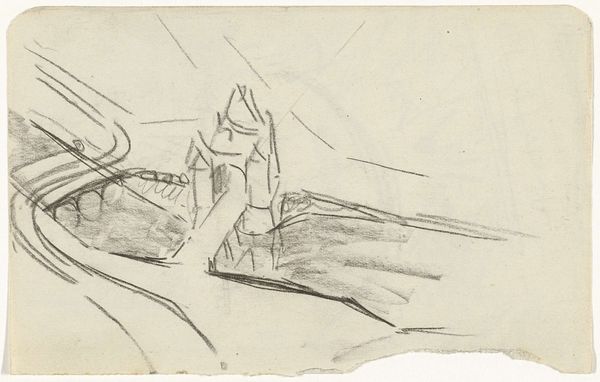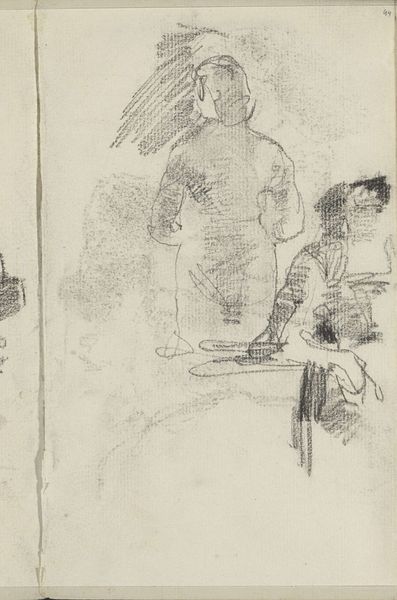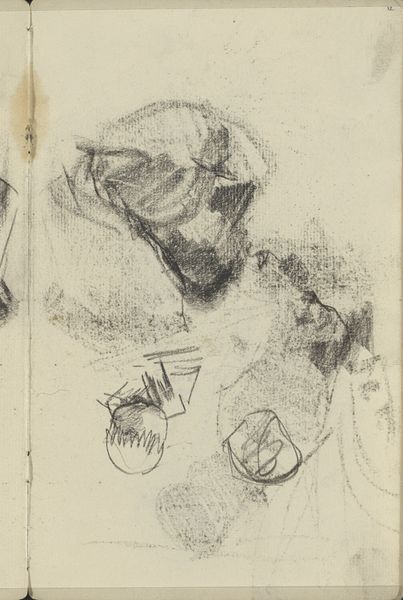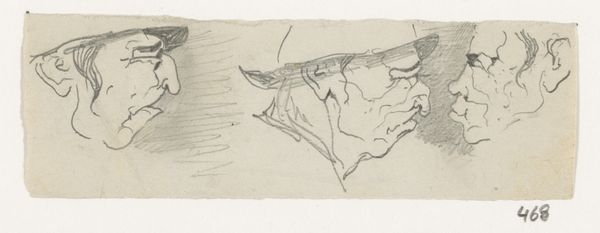
drawing, ink, pen
#
portrait
#
drawing
#
light pencil work
#
quirky sketch
#
pen sketch
#
pencil sketch
#
figuration
#
personal sketchbook
#
ink
#
sketchwork
#
ink drawing experimentation
#
sketch
#
pen-ink sketch
#
sketchbook drawing
#
pen
#
sketchbook art
Dimensions: height 72 mm, width 90 mm
Copyright: Rijks Museum: Open Domain
Editor: So, this drawing, "Drie Koppen" by Johannes Tavenraat, dates back to sometime between 1840 and 1880. It's a pen and ink sketch. There is something very immediate about its fragmented nature; it gives the impression that this was an experimental personal study. What do you make of this piece? Curator: It strikes me as a glimpse into the 19th-century art world, doesn't it? During this period, there was increasing interest in the psychology of the individual. You know, this drawing feels almost like a sociological study of facial expressions. It makes me wonder: were these studies intended for a larger composition, or did they serve simply as an investigation of human physiognomy? Editor: That’s fascinating. I hadn’t considered the focus on psychology. It really contextualizes these rather grotesque, distorted faces. It makes you consider whether they are caricatures, portraits or purely products of the artist's imagination. Curator: Exactly! The artist would have absorbed cultural attitudes towards representation. Tavenraat's social circles, access to academies, the role of the Rijksmuseum and its impact: all would affect his production of, and the reception towards, such imagery. Even the very act of sketching as a practice becomes meaningful within this context. Why was Tavenraat creating images, what role might he imagine for his artwork in the wider world? Editor: I see. It's like unpacking layers of historical context that surround even a simple sketch. Now, when I look at these faces, I begin to interpret them as echoes of an earlier era and how it saw itself. Curator: Precisely! And that awareness, I think, helps us to truly appreciate its presence here today in the museum’s collection. It invites a conversation with the past.
Comments
No comments
Be the first to comment and join the conversation on the ultimate creative platform.
